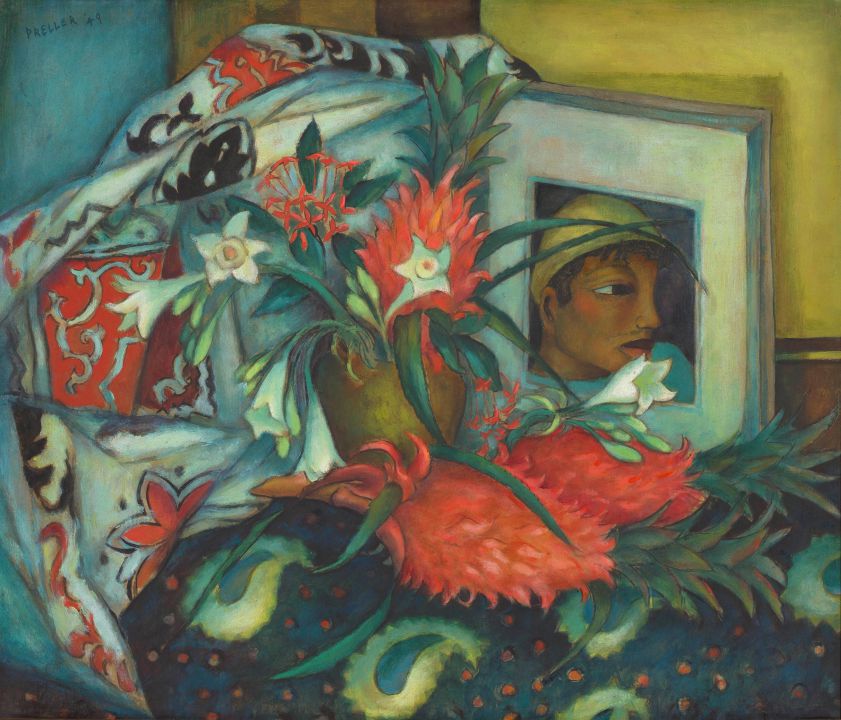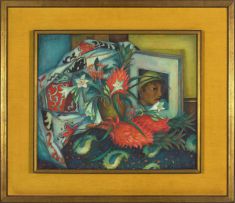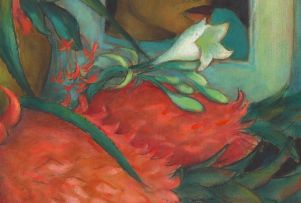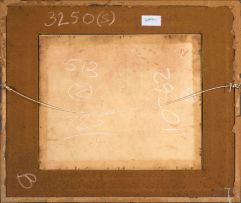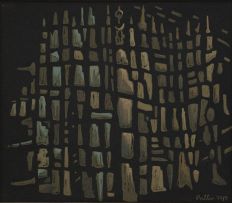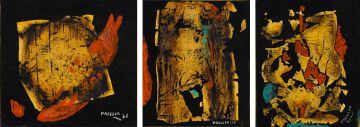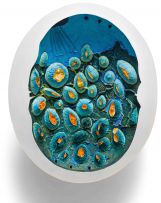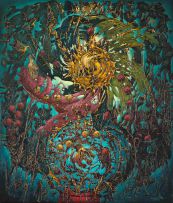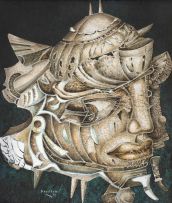The Red Pineapples
Alexis Preller
Incl. Buyer's Premium & VAT
About this Item
signed and dated '49; inscribed with the title on the reverse
Notes
In 1948 Alexis Preller sailed up the east coast of Africa on a visit to the Seychelles. Whether this sensual still life was painted on this visit or shortly afterwards, it was no doubt inspired by his experiences of the place and its people. In letters to his sister, Minnie, he extols the attractions of the islands - the turquoise sea, the exotic vegetation, tropical fruits such as pineapples and mangoes, and the locals draped in 'exciting tangas'.1 Preller bought the first of his many printed cotton cloths when he visited Swaziland in the late 1930s and he used them constantly - in his paintings as 'altar' cloths and backdrops (see figures 1 and 2), and in his everyday life as tablecloths and throws.² Many of the cloths that appear in his work have designs in white, red and black, what the anthropologist Victor Turner calls the 'triad' of colours central to sub-Saharan African belief systems. The colours are worn close to the body as clothing, drapery or beadwork, to protect the wearer and maintain the balance between benevolent and malevolent forces. They have associations rather than specific 'meanings' - white is always regarded as positive, healthy, and cool, but both red and black can be positive, negative, or ambivalent, being associated with heat, illness, danger, life, death, blood, fire, the sun, and the ancestors.
1. Esmé Berman and Karel Nel (2009) Alexis Preller: Africa, the Sun and Shadows, Johannesburg: Shelf, page 124.
2. Ibid, page 42.
Provenance
Stephan Welz & Co in association with Sotheby's, Johannesburg, 30 November 1993, lot 513.
Strauss & Co, Cape Town, 21 October 2013, lot 725.
The Tasso Foundation Collection of Important South African Art assembled by the Late Giulio Bertrand of Morgenster Estate.
